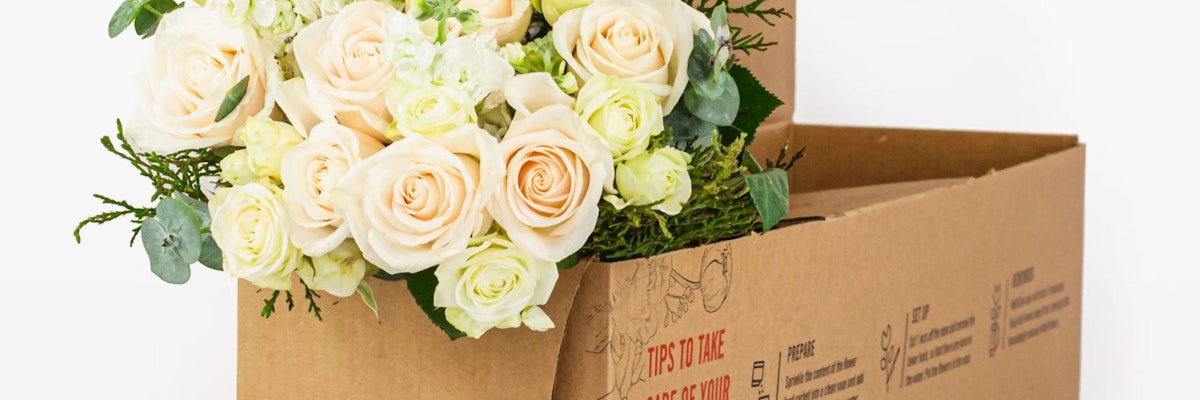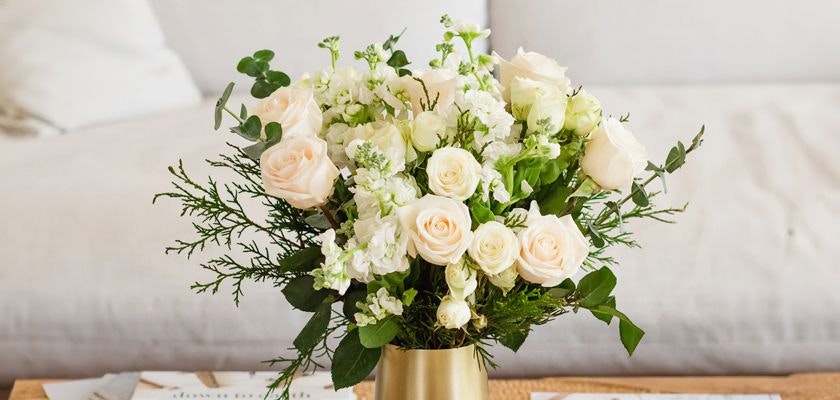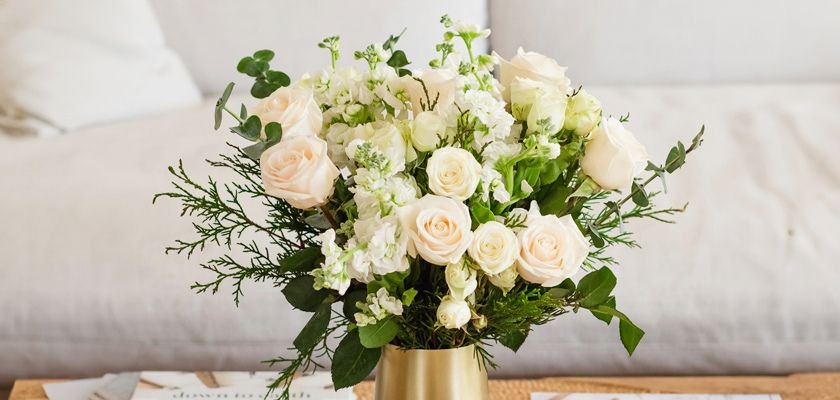Proper Etiquette for Sending Funeral Flowers
Funerals are emotional moments filled with grief and reflection. During these times, expressing sympathy thoughtfully can offer comfort and support to grieving families.
Funeral Flower Guide: Tips for Sympathy Gifts & Arrangements
Among the most meaningful gestures you can make are sending funeral flowers. These floral tributes carry profound symbolism and can honor the life of the deceased while providing solace to their loved ones. However, sending funeral flowers requires consideration and understanding of proper etiquette.
Funeral flower etiquette isn’t just about selecting a beautiful arrangement. It’s about timing, tradition, and communicating compassion. Understanding the nuances of these expressions ensures your gesture is both appropriate and warmly received. Sympathy gifts, such as condolence arrangements, hold emotional meaning, and they must align with cultural, religious, and familial sensitivities.
At its heart, the purpose of funeral flower etiquette is to show respect for the deceased and provide a comforting presence for the family. Flowers have long been associated with remembrance and consolation, making them one of the most heartfelt ways to express condolences. Yet, questions often arise about what kind of flowers to send, when to send them, and how to ensure they convey the right sentiment.
Families coping with loss are navigating difficult emotions. A thoughtfully chosen funeral flower arrangement can help bridge the sense of loss with comfort, serving as a silent yet powerful reminder that they are not alone in their grief. Whether you are close to the family or an acquaintance of the deceased, flowers allow you to offer a kind, lasting message of sympathy.
If you're unfamiliar with sending funeral flowers or feel apprehensive about making the wrong choice, it’s normal to seek guidance. Cultural norms, personal preferences, and the family’s wishes all play roles in determining the appropriateness of your floral gesture. Being attentive to these details ensures your sentiment is expressed in the most meaningful way.
Of course, choosing high-quality and timely sympathy arrangements is essential. Companies like BloomsyBox specialize in creating elegant, fresh, and customizable funeral arrangements to help you convey your condolences with grace. Their easy ordering process and premium blooms make it simple to handle this sensitive task while respecting proper etiquette.
By the end of this post, you will have a clear understanding of how to approach sending funeral flowers. From choosing the best flowers for funerals to customizing condolence arrangements, this guide will walk you through each step. It’s not just about the flowers themselves but about the message of support and care they bring to those in mourning.
The Significance of Funeral Flowers
Funeral flowers have held symbolic importance across cultures and generations. Their primary role is to offer comfort to grieving families while honoring the memory of the deceased. Flowers have a way of speaking when words fail, making them a timeless choice for sympathy gifts.
For centuries, sending flowers to funerals has been a meaningful tradition. Flowers symbolize life, beauty, and the cycle of renewal. Lilies, roses, and carnations are popular choices due to their association with peace, love, and remembrance. Arrangements such as wreaths and sprays also carry distinct messages of reverence and care.
The significance of funeral flowers extends beyond personal expression. They also contribute to the atmosphere of the service, turning a solemn occasion into one of beauty and reflection. Thoughtfully chosen flowers can complement the tone of the ceremony and provide emotional comfort to everyone in attendance.
Choosing appropriate flowers showcases your respect for the family and their loss. It demonstrates your acknowledgment of their grief and offers tangible support. During moments of profound sadness, these small yet meaningful gestures can help lighten their burden.
Cultural and religious practices often influence the role of funeral flowers. For example, some faiths prefer white flowers as a sign of purity, while others may welcome a bolder color palette as a celebration of life. Understanding these traditions ensures the flowers you send are both appropriate and appreciated.
When you send flowers, you’re not just showing kindness toward the family; you’re also paying tribute to the deceased. Each bloom, color, and arrangement type reflects different sentiments. Writing the names of loved ones or adding comforting messages to sympathy cards can make the gesture even more personal.
Some families prefer flowers to be kept simple, while others may request specific varieties or arrangements. It’s always good etiquette to honor the family’s wishes, particularly if they’ve specified any preferences in the obituary. This attentiveness ensures your gesture feels authentic and respectful.
Ultimately, funeral flowers are about connection. They create a bridge between those grieving and those offering their condolences. By sending them, you’re reminding the family that they’re loved, supported, and remembered during this difficult time.
Choosing the Best Flowers for Funerals
Selecting the best flowers for funerals requires careful thought. Flowers hold specific meanings, and the type you choose should reflect your relationship with the deceased and convey a heartfelt message of sympathy. For example, lilies are one of the most popular choices due to their association with purity and the restoration of innocence. Their delicate beauty often symbolizes the soul of the departed.
Another common funeral flower is the rose, which offers a range of meanings based on its color. White roses stand for innocence and reverence, while red roses are a powerful expression of love and respect. Similarly, yellow roses might be chosen to reflect friendship and compassion, especially if your relationship with the deceased was one of close camaraderie.
Carnations are a versatile choice for condolence arrangements. Known for their long-lasting beauty and wide variety of colors, carnations carry messages of remembrance and affection. Pink carnations, for instance, are often thought to express gratitude and enduring love. This makes them a fitting addition to sympathy gifts when you want to bring comfort to a grieving family.
Chrysanthemums, or mums, are another flower often associated with funerals. Their significance varies across cultures, but in many regions, they are symbols of death, mourning, and honor. They are especially popular in countries like Japan and France, where they are exclusively used for funeral arrangements.
Orchids provide an elegant and exotic touch, representing eternal love and beauty. These flowers are a thoughtful option when you wish to offer a more unique expression of condolences. Their timeless appeal makes them particularly suitable for those who value simplicity and sophistication.
Beyond individual flowers, the arrangement style also matters. Standing sprays, hearts, and crosses are display options commonly used in funerals. If you’re looking to offer something subtler, consider a funeral basket or a compact sympathy bouquet. These are appropriate for expressing respect without overwhelming the family with grand gestures.
Ultimately, the best flowers for funerals are those that carry personal meaning. Whether you opt for traditional options like lilies or a more unique choice like orchids, the sentiment behind your selection is what makes it truly special. High-quality arrangements, such as those offered by BloomsyBox, ensure that every bloom is fresh, vibrant, and meaningful, reflecting your respect and care during these delicate times.
Understanding Cultural and Religious Considerations
The importance of understanding cultural and religious considerations when sending funeral flowers cannot be overstated. Different traditions and practices significantly impact what types of flowers are appropriate and how they should be presented. Showing respect for these customs ensures your gesture is well-received and honors the family’s beliefs.
For instance, in Christian funerals, flowers are commonly used to symbolize eternal life, mourning, and hope. White flowers like lilies and roses are considered fitting choices as they reflect purity and peace. You might also see arrangements like crosses and wreaths, which align with religious symbolism and are often displayed near the casket.
Jewish funeral traditions, however, tend to avoid flowers altogether. Instead, families often prefer acts of charity or donations to honor the deceased. If you’re unsure of the family’s preferences, it’s always best to inquire or follow the guidelines mentioned in the obituary. This ensures you respect their customs while expressing your support.
Hindu funerals emphasize simplicity, and flowers are an integral part of the rituals. Traditional garlands made of white or yellow flowers like marigolds are commonly used to pay homage to the deceased. The vibrant colors are not seen as a celebration, but rather as symbols of sanctity and divine energy.
Buddhist funerals often feature white flowers, as they signify peace, condolence, and mourning. Lavish or brightly colored arrangements are seen as inappropriate, so it’s crucial to keep your selection subdued. Potted plants may also be considered a thoughtful and lasting alternative to cut flowers.
Islamic funerals have varying practices depending on the sect, but flowers are generally simple and understated. Some families may accept floral tributes, while others might not incorporate them at all. When in doubt, consult with someone close to the family or refer to any publicly shared preferences.
Asian cultural traditions place great emphasis on color symbolism. For example, in Chinese funerals, white and yellow are considered appropriate for mourning, whereas red flowers are strictly avoided as they are associated with happiness and celebration. Similarly, in Korean traditions, chrysanthemums are a common choice to express grief and remembrance.
By understanding cultural and religious nuances, you ensure that your gesture aligns with the family’s values and traditions. This attention to detail adds an extra layer of thoughtfulness to your condolence arrangements. When working with a trusted florist like BloomsyBox, they can guide you in choosing flowers that adhere to the specific customs of the bereaved, ensuring your expression of sympathy is both meaningful and respectful.
When to Send Funeral Flowers
Timing is an essential aspect of funeral flower etiquette. Each stage of the grieving process presents opportunities to share your condolences, and understanding the right time to send flowers shows that you are both considerate and thoughtful.
Sending flowers prior to the funeral service is one of the most traditional approaches. Floral arrangements sent to the funeral home or place of service contribute to the atmosphere, creating a comforting and respectful environment. These flowers often surround the casket or are placed at the front of the venue, where they serve as a visual tribute to the deceased.
If timing proves challenging, sending flowers during or after the service is also acceptable. Arrangements delivered to the venue in time for the viewing or ceremony ensure that your message of sympathy becomes part of the shared mourning experience. Funeral flower etiquette often permits a range of delivery options depending on your relationship with the deceased and the immediate family.
For those who didn’t learn about the passing until after the funeral, sending condolence arrangements to the family home can be a heartfelt option. This approach acknowledges their loss while giving them something comforting to enjoy in their personal space. Blooms like lilies, roses, or orchids are perfect for this gesture, as they are timeless symbols of sympathy.
Timing also depends on how close you are to the grieving family. Close friends and immediate family members might send flowers promptly, whereas distant relatives or acquaintances can send arrangements a few days after to avoid overwhelming the family. A thoughtful card accompanying the flowers can help convey your intentions clearly and sincerely.
Some cultures and beliefs allow or encourage flowers to be sent even weeks after the funeral. This is a meaningful way to remind the family that their loved one is still being thought of. Sympathy gifts like plants or less formal flower arrangements are particularly suitable in these situations, as they represent enduring support and remembrance.
When in doubt, it’s always a good idea to check details with the service coordinator or someone close to the family. Being mindful of the family’s timeline and preferences will ensure that your gesture is both appropriate and appreciated. Opting for services like BloomsyBox also allows you to schedule deliveries with ease, ensuring your flowers arrive at the perfect time.
How to Address Sympathy Gifts and Condolence Arrangements
Properly addressing sympathy gifts and condolence arrangements might seem like a small detail, but it carries significant weight. Ensuring that your flowers or gifts are personalized and directed to the intended recipient adds a heartfelt touch to your expression of sympathy.
When sending funeral flowers to the service, clearly marking them with the deceased's full name helps the funeral home or venue place them appropriately. For example, if multiple services are being held at the same location, this detail ensures your arrangement is displayed at the correct one. You may also want to include your name and a brief message so the family knows the flowers came from you.
If you’re sending condolence arrangements to the family home, it’s thoughtful to address the card to the entire household. For instance, you might use “The Smith Family” as the recipient to acknowledge everyone affected by the loss. This is particularly meaningful in cases where different members of the family might reside at the same place.
Personalization is another key element of funeral flower etiquette. Including a heartfelt note or card with your sympathy gift can make your gesture more meaningful. A message like “Thinking of you during this difficult time” or “Our thoughts and prayers are with your family” adds a layer of warmth to your condolence arrangements.
It’s also essential to match the tone and size of the arrangement to your relationship with the deceased. Larger arrangements like standing sprays or casket adornments are typically sent by family or very close friends. Smaller baskets or bouquets are more common from acquaintances, colleagues, or distant relatives.
If the family has expressed preferences such as “in lieu of flowers, consider donating to X organization,” it’s courteous to respect their wishes. However, sending a simple arrangement or plant for their home is still often acceptable as it serves as a private expression of sympathy.
Navigating these details can be easier when working with a professional florist. Services like BloomsyBox offer personalized guidance to ensure your flowers are addressed and delivered appropriately. Their expert team can tailor arrangements to suit the occasion, making sure your gift is both tasteful and respectful.
Finally, it’s always a good idea to double-check addresses and delivery times before placing your order. Accurate addressing demonstrates attention to detail and ensures your sympathy gifts are received in a timely and meaningful way. It’s a simple yet impactful way to show you care during such a sensitive time.
Writing Messages for Sympathy Cards
Crafting a message for a sympathy card can be challenging, as finding the right words in times of loss requires sensitivity and care. Yet, a heartfelt note accompanying your funeral flowers can lend a personal touch and deepen the impact of your condolence gesture. When writing a sympathy card, simplicity is often the best approach.
Start by addressing the family or individual directly. If you know them personally, consider using their first name or a familial title, such as “Dear Aunt Susan.” If your relationship is more formal, “Dear Smith Family” or “To the Family of [Deceased’s Name]” is appropriate. This small but personal opening sets a respectful tone for your message.
Include a statement of condolence that expresses your sorrow for their loss. For example, you might write, “I am so sorry for your loss” or “Please accept my deepest sympathies during this difficult time.” These simple phrases convey compassion and demonstrate that your thoughts are with them.
If you knew the deceased, sharing a brief memory or remark about their character can add warmth and meaning to your message. For example, “John was such a kind and generous man; I will always cherish the time we worked together” infuses the note with authenticity and love. If you didn’t know the deceased personally, offering general words of comfort is still meaningful and appreciated.
It’s also important to keep the tone appropriate for the situation. Avoid overly casual language or humor, as they might be perceived as insensitive. Instead, opt for a voice that is both comforting and respectful, ensuring your words align with the solemnity of the occasion.
Include a closing statement that offers support or reassurance, such as “You are in my thoughts and prayers” or “Wishing you peace and comfort.” This reminds the recipient that they are not alone in their grief, which can be a powerful source of solace.
Don’t forget to sign your name or your family’s name at the end of the card. There’s no need to include elaborate details; a simple signature like “With love, Sarah” or “Thinking of you, The Johnson Family” suffices. Clear identification makes it easier for the grieving family to acknowledge and remember your gesture.
Lastly, consider the design of the sympathy card itself. Simple, understated cards tend to be most suitable, featuring neutral tones or soft floral motifs. Services like BloomsyBox often allow you to personalize your card with a printed message, combining convenience with a heartfelt touch.
Alternatives to Traditional Funeral Flowers
While funeral flowers are a timeless way to express sympathy, there are many thoughtful alternatives for those seeking a more personalized gesture. These options can complement or replace traditional flowers, depending on the wishes of the family and the sentiments you’d like to convey.
One popular alternative is sending a potted plant. Unlike cut flowers, which are temporary, plants symbolize growth and continuity. Options like peace lilies or succulents are low-maintenance and long-lasting, providing a subtle reminder of your support long after the funeral. They can be placed in the family’s home as a peaceful and enduring token of your sympathy.
Charitable donations offer another meaningful way to honor the memory of the deceased. If the family has suggested donations in lieu of flowers, consider contributing to a cause that was important to the deceased. This gesture reflects their values and supports an organization that they cared about, making it a deeply personal expression of condolence.
Personalized keepsakes are also a thoughtful alternative. Items like engraved photo frames, customized candles, or memory boxes can provide the family with a tangible reminder of their loved one. These keepsakes allow them to preserve cherished memories while feeling the love and support of those around them.
Food baskets or meal services are practical options that offer immediate comfort to grieving families. Preparing meals or sending a basket of snacks, fruits, or easy-to-prepare foods can ease the burden of daily responsibilities during such a stressful time. These gestures are especially valuable for families who are busy planning the funeral or accommodating out-of-town guests.
Another alternative gaining popularity is planting a tree or sponsoring a memorial tree program in honor of the deceased. This eco-friendly option symbolizes life and can offer enduring beauty in memory of a loved one. Some organizations even allow you to dedicate the tree and provide a certificate or plaque to commemorate the gesture.
For those who wish to express their condolences more creatively, providing a handwritten letter or poem can be a deeply touching alternative. Sharing your thoughts, memories, or words of encouragement offers a personal and profound connection to the family. It’s a gesture that reflects time, effort, and sincerity.
Finally, combining flowers with one of these alternatives can be an excellent compromise. For example, you might send a small bouquet alongside a donation card or a framed photograph. Companies like BloomsyBox make it easy to customize sympathy gifts, offering a wide selection of blooms that can be paired with other heartfelt tokens. This allows you to honor tradition while creating something uniquely meaningful.
Proper Etiquette for Sending Flowers to the Family Home
Sending flowers to the family’s home is a thoughtful way to express sympathy and provide comfort, especially if you cannot attend the funeral service. However, adhering to proper etiquette ensures that your gesture is received as intended and brings solace during a difficult time.
One of the first considerations when sending flowers to the family home is timing. Flowers are typically sent within a week of the funeral service or upon learning about the passing. This timing allows your condolence arrangements to arrive when the family is in need of emotional support and can appreciate the sentiment.
The type of arrangement you choose should be suitable for a home setting. Sympathy gifts like modest bouquets, potted plants, or small floral baskets are often ideal. These are easy to display and maintain, making them a practical yet meaningful choice. BloomsyBox offers a wide array of options that strike the perfect balance between elegance and simplicity.
Personalization can enhance the impact of your gesture. Including a heartfelt note with your arrangement allows you to share a personal message of comfort. While the flowers speak volumes, your words can offer additional solace and connection. A brief message such as “Thinking of you and your family during this time of loss” can be deeply meaningful.
It’s also important to consider the family’s preferences. Some may have specific cultural or religious guidelines regarding flowers, while others might prefer alternative expressions of sympathy. Always check for any requests mentioned in the obituary or reach out to someone close to the family for guidance.
Knowing where to send the flowers is another critical aspect of etiquette. If you are unsure of the family’s address or whether they are open to receiving deliveries, a discreet inquiry can prevent any missteps. Additionally, make sure the delivery service knows to handle your arrangement with care, as this reflects your respect for the bereaved.
Finally, avoid overdoing the size or style of the arrangement. Large or elaborate displays might feel overwhelming in a home setting. Opting for something understated and tasteful shows you’ve considered their needs and space while still offering a beautiful tribute. With thoughtful choices and reliable services like BloomsyBox, you can be confident that your gesture will bring warmth and comfort to the grieving family.
The Role of Sympathy Flower Arrangements in Healing
Sympathy flower arrangements play an essential role in the grieving and healing process. These floral tributes are more than just beautiful displays; they serve as a source of emotional support and a reminder of love and connection during a time of loss.
On a symbolic level, flowers carry profound meanings that can resonate deeply with the bereaved. For instance, lilies symbolize peace and renewal, while roses can represent love and reverence. Sending thoughtfully chosen arrangements communicates care and understanding without the need for words.
The presence of flowers often brings a sense of tranquility to an otherwise somber environment. Their natural beauty offers a contrast to the pain of loss, serving as a subtle but powerful reminder of life’s cycles and the potential for renewal. Flowers can transform a space into one of reflection and hope, creating an atmosphere that aids in emotional healing.
Sympathy flower arrangements also provide comfort by affirming the presence of a supportive community. Each bouquet or arrangement sent demonstrates that the family is not alone in their grief. This collective display of care can be deeply moving, helping the bereaved feel surrounded by love and compassion.
For those grieving, flowers can serve as an anchor, providing a tangible connection to memories of the deceased. Placing them at a gravesite or in a special area of their home allows the family to reflect and remember their loved one in a meaningful way. This process of creating a dedicated space for remembrance is often a vital part of the healing process.
Sympathy gifts like flower arrangements can also act as a catalyst for celebration rather than just mourning. Bright and colorful arrangements can evoke stories, memories, and qualities of the deceased, shifting the focus toward gratitude for their life. This balance between mourning and celebration can help families move forward with greater peace.
Whether sent to a funeral service or the family’s home, these arrangements symbolize unity and shared sorrow. They bridge the gap between those who are grieving and those offering their support. Services like BloomsyBox make it easy to ensure your arrangements convey the intended message with grace and sensitivity.
Ultimately, flowers remind us of the beauty and fragility of life. They embody the sentiments we often struggle to express, making them an invaluable part of the grieving process. By choosing and sending sympathy flower arrangements thoughtfully, we can provide comfort that helps families begin to heal and honor the memory of their loved one.
Navigating the process of sending funeral flowers demands care, thoughtfulness, and an understanding of proper etiquette. Whether it’s selecting the best flowers for funerals, personalizing condolence arrangements, or considering cultural and religious nuances, every detail matters. Your gesture isn’t just about the blooms themselves but about the message of support and compassion they convey.
The importance of timing cannot be overstated. Sending sympathy flower arrangements at the right moment ensures your thoughtfulness aligns with the family’s needs during their time of grief. Flowers sent before or during the service serve as beautiful tributes, while those sent afterward to the family home offer continued comfort and a reminder that they are not alone.
Writing a heartfelt message and choosing the right arrangement type are ways to personalize your gesture, reflecting your relationship with the deceased and their family. A simple yet genuine note can bring immense solace, turning your flowers into a meaningful expression of empathy. Understanding the role of cultural or religious traditions in guiding your decisions further enhances the appropriateness of your gesture.
Sympathy flower arrangements play a crucial role in the healing process, bringing peace and beauty to spaces of mourning. They symbolize shared sorrow, love, and remembrance, helping families cope with their loss while honoring the life of their loved one. Whether it’s lilies for purity or roses for love, each flower carries a message that words often find hard to express.
Choosing a trusted provider such as BloomsyBox.com makes the process seamless and stress-free. With their wide range of fresh, customizable arrangements, you can be confident that your sympathy gifts are crafted with elegance and care. BloomsyBox’s dedication to quality ensures your flowers communicate respect, compassion, and support during one of life’s most difficult moments.
Ultimately, sending funeral flowers is about more than tradition. It’s an act of kindness that connects hearts and reminds grieving families that they are surrounded by love. By understanding proper funeral flower etiquette, you can make your gesture meaningful and impactful, providing comfort when it’s needed most.
If you’re ready to explore a collection of tasteful and heartfelt flowers, click here to discover options that suit every need. From carefully arranged sympathy flower arrangements to timeless classics, you’ll find the perfect way to convey your support and honor the memory of a loved one.




